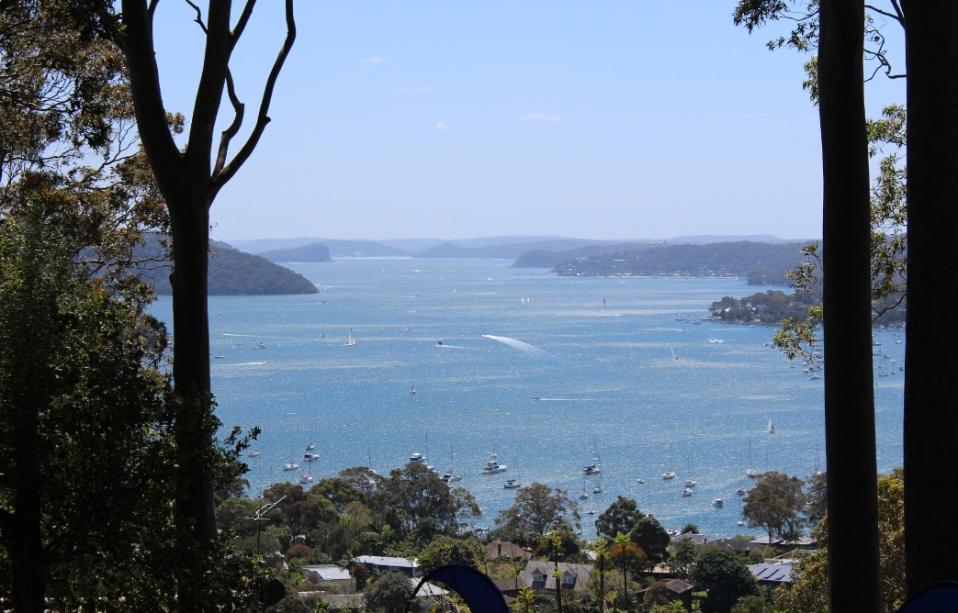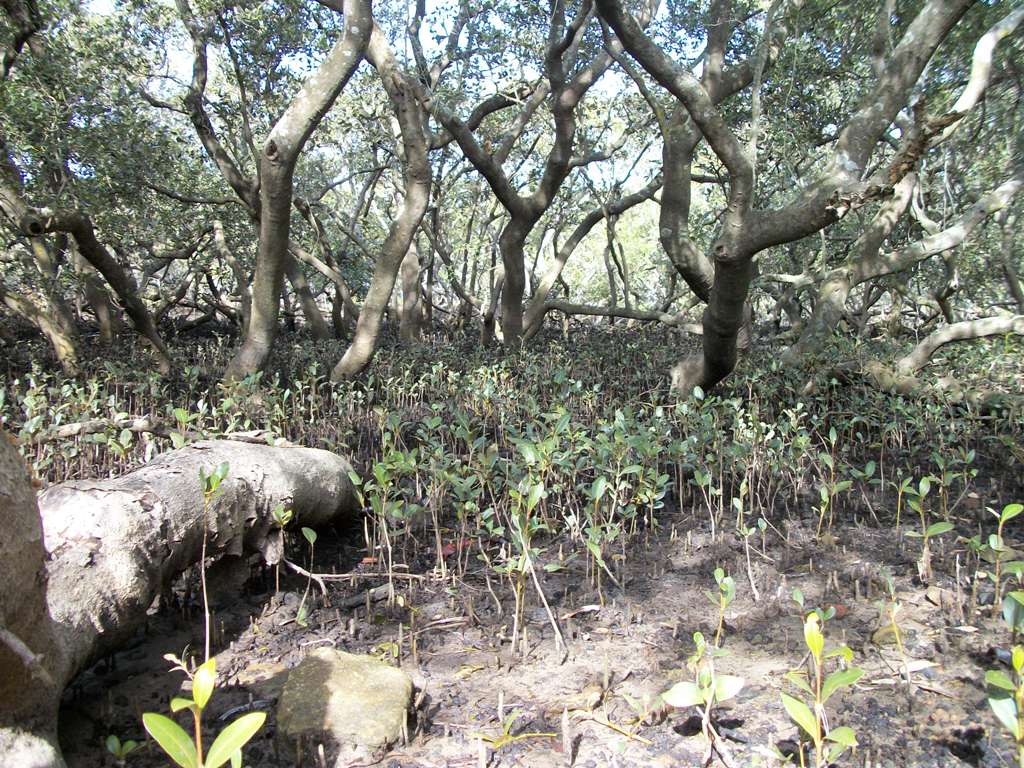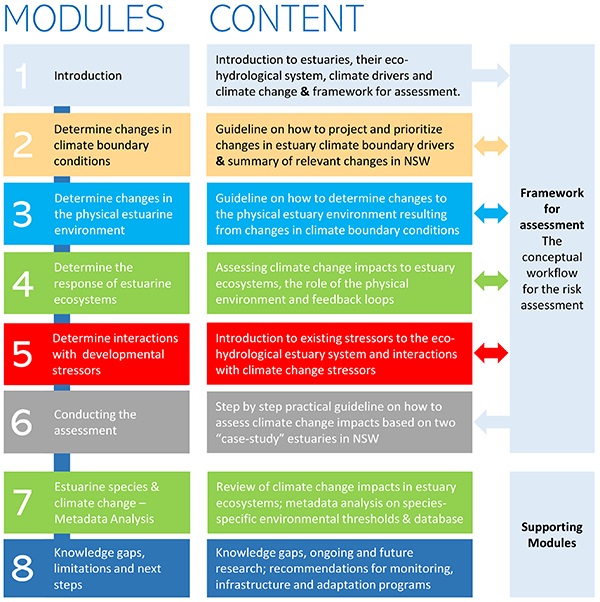June 30 - July 6, 2019: Issue 411
UNSW Takes On Climate Change In Our Estuaries – Where 80% Of Australians Live, Work And Play

June 26, 2019 - by Lachlan Gilbert, UNSW Media
A multi-disciplinary team led by UNSW Sydney researchers is releasing the first large-scale summary of how our estuaries – and the 80 per cent of NSW residents living on them – will be impacted by climate change.
Two out of three Australians and four out of five people in NSW are likely to have significantly altered lifestyles if estuaries – tidal rivers and harbours – become impacted by climate change.
To address this risk, UNSW Sydney’s water engineering researchers (working with NSW’s Government Scientists and Macquarie University) have today launched a free online resource that enables scientists and all levels of government to assess and act on threats posed to our coastal estuaries by climate change.
Dr Valentin Heimhuber from the Water Research Laboratory of UNSW’s School of Civil and Environmental Engineering, and a lead researcher who helped develop the guide, describes estuaries as the “canary in the coal mine” for climate change.
“Estuaries are subjected to a ‘double-whammy’ of climate change impacts,” Dr Heimhuber says. “On the land side, climate change is influencing rainfall and temperature patterns, which is critical for agricultural productivity and healthy ecosystems. On the ocean side, we have concerns with sea level rise and oceanic warming. Estuaries are where these two forces – land and ocean – collide, and it happens to be where most Australians live.”
Associate Professor Will Glamore, Chief Investigator at the Water Research Laboratory, UNSW, sees estuaries as the lifeblood of Australian society. “Our estuaries are where 80% of people live, work and play.” he says. “This research highlights how the 180+ estuaries in NSW may be threatened by climate change.”
Since European settlement, A/Professor Glamore says, estuaries and harbours have been impacted to the extent that ecosystems are now at risk across the state.
“Our fear is that climate change, mixed with ongoing development, may be the tipping point for these systems,” he says.
“Sydney Harbour is an iconic example but only one of the many estuaries at risk across the state. Our harbour is fighting a battle on all fronts. This includes an urbanising catchment, changing water quality, rising temperatures and rising tides.
“This research shows that rising tides won’t just threaten our beaches. With climate change, the tide will penetrate into our harbours and estuaries, potentially impacting farm productivity and the environment.”
“Cities like Sydney, Newcastle and Wollongong will need to adapt to the changing water regime. This includes our planning levels, our freshwater resources and everything that lives in and around our estuaries and harbours. The potential impact to our daily life is daunting and we are just beginning to understand the extent of the problem.”
Beyond the direct impact to humans, climate change may be devastating to the environment, A/Professor Glamore says.
“Climate change threatens our mangroves, oysters, sea grasses, fish, bird-life and saltmarsh,” he says. “Research presented in this study highlights our current knowledge on how these systems will respond when we face climate change and population growth pressures at the same time.”
Launch of a Climate Change Risk Assessment Guide
To understand the implications of climate change in estuaries, researchers from UNSW, Macquarie University, the Sydney Institute of Marine Science, and the NSW’s Office of Environment and Heritage have joined forces to prepare a guide for assessing climate change in our estuaries. Titled, Climate change in estuaries – state of the science and framework for assessment, the eight reports bring together the latest knowledge into an easy to understand and transparent guide. The reports are designed to empower planning authorities, local councils and businesses to make informed decisions about our harbours, ports and estuaries in a rapidly changing climate.
An important component of the project is the Eco-Thresholds database developed by marine ecologists A/Professor Melanie Bishop and Dr. Gabriel Dominguez from Macquarie University’s Department of Biological Sciences. The Eco-Thresholds database is an online tool that compiles more than 300 research publications on the effects of climate change on estuarine species in Australia and worldwide.
“Understanding how individual species respond to changes in their environment, such as increasing water temperature or salinity, is a critical factor in assessing climate change impacts in estuaries. To address this, we have collated information from every previous climate change study on flora and fauna – mangroves, salt marshes, oysters, fish - you name it,” A/Professor Melanie Bishop says.
She says anyone can use the tool to see key findings from previous research or to add new research via an easy-to-use online map.
“For example, you could use the database to search how increased salinity from sea level rise will affect the abundance and health of different fish species or how saltmarsh or oysters can withstand heatwave conditions from rising water temperature.
“This work also highlights that there are many issues left to understand. The Eco-Thresholds Database and the reports are living documents, freely available to the global community. Researchers from all over the world can now contribute new information as it becomes available.”

Mangrove swamp at Careel Bay - part of the Pittwater estuary
Mangroves, which are part of an estuary ecosystem, could be drastically affected if tidal marks are altered by climate change. Picture: UNSW
Renewed hope
A/Professor Glamore says a sense of urgency is needed when acting to protect our estuaries. Thankfully, the NSW State Government has recently updated legislation protecting and planning for estuaries within the Coastal Management Act and the Marine Estate Management Act.
“The legislation is an acknowledgment that we need to understand and plan for the impact of climate change on our estuaries,” A/Professor Glamore says.
“Everyone hears about the threat of climate change, but few understand what it means to them locally.”
“We believe our detailed guide and online resources will ensure this information is open, transparent and available for all. This is just the beginning of an important process to better manage the waters where we live, work and play.”
This research was funded by the NSW Government via the OEH Adaptation Hub Coastal Node.
More details about this research can be found at: http://estuaries.wrl.unsw.edu.au/index.php/climate-change/
Climate Change In Estuaries – State Of The Science And Framework For Assessment
‘Climate change in estuaries – State of the science and framework for assessment‘ is the most comprehensive guide for assessing climate change impacts in NSW estuaries to date.
The guide consists of 8 stand-alone modules that provide an illustrative summary of the climate, physical and ecological science around climate change in estuaries and tidal wetlands. The modules are accompanied by the Eco-thresholds community database, a unique collection of physiological thresholds of estuarine species to changes in environmental conditions collected from over 300 literature sources. The database can be downloaded and users can add information online as new studies become available.
A brief description of the modules:

The Guide will provide a roadmap for navigating the complexity of assessing climate change risks in estuaries and tidal wetlands for researchers, government staff and consultants. The products will be useful to marine biologists studying the effect of heat stress on saltmarsh communities, government agency staff planning local management plans, high school teachers organising a class, or researchers requiring information on the impact of climate change on individual wetland species.